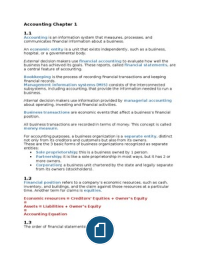Summary
Financial Management (accounting) Summary, chapter 1-2-3-6-7-9-10
- Course
- Institution
Study: International Business and Languages (HvA) Summary Financial Management (accounting) Book: CU HvA Accounting Principles, Johan Kloosterman, Ed. 2014 Chapter 1/2/3/6/7/9/10
[Show more]



